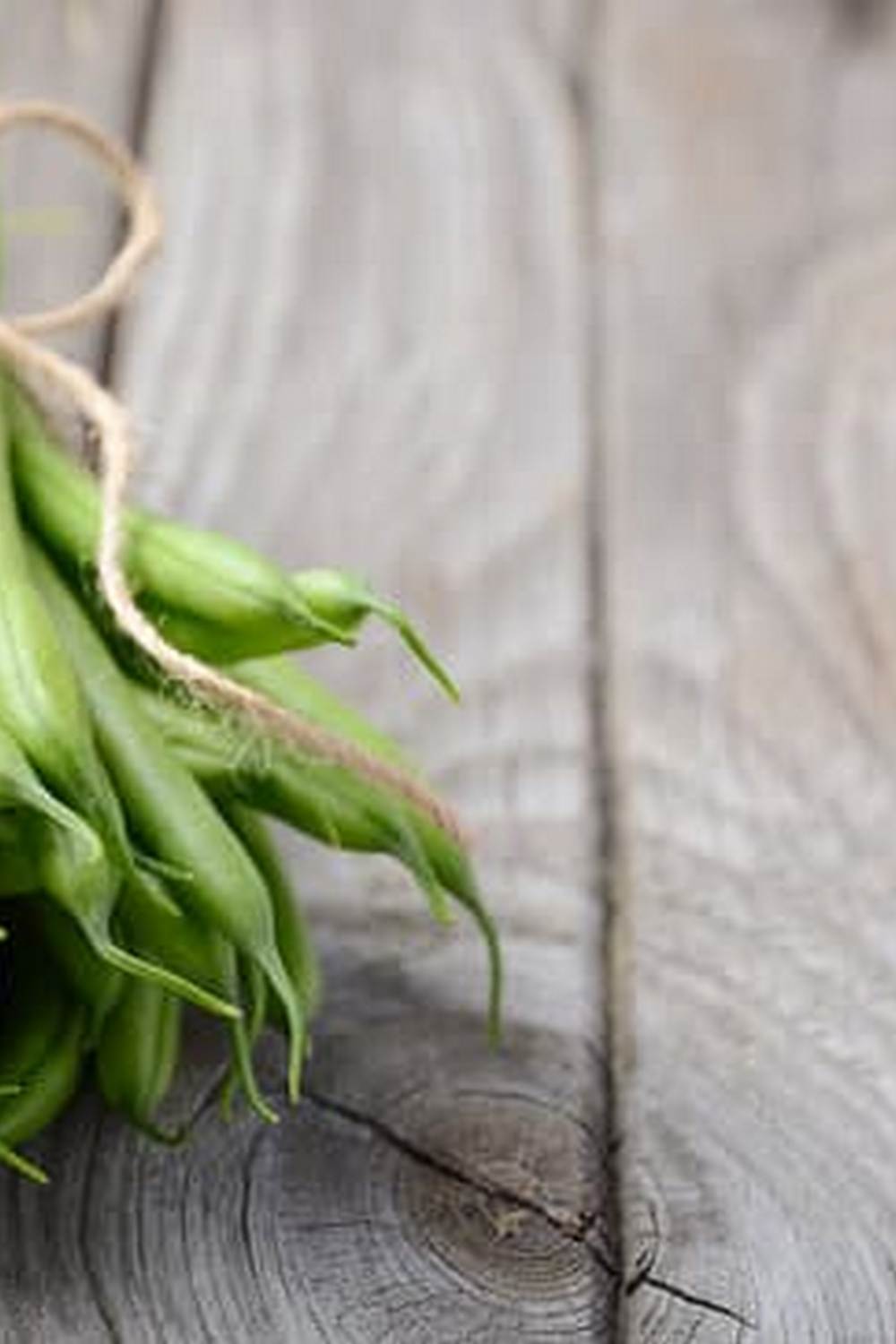Pressure treated wood is a popular choice for many gardeners looking to build durable and long-lasting structures, including vegetable gardens. This type of wood undergoes a process that infuses preservatives deep into the fibers, making it resistant to decay and insect damage. In the realm of gardening, pressure treated wood can be particularly beneficial for creating raised beds or borders for vegetable gardens.
One of the primary advantages of using pressure treated wood in vegetable gardens is its durability. Unlike untreated wood, which may rot over time when exposed to moisture and soil, pressure treated wood can withstand the elements and remain structurally sound for years. This longevity makes it a cost-effective option for gardeners looking to invest in materials that will last through multiple growing seasons.
However, concerns have been raised about the potential risks associated with using pressure treated wood in vegetable gardens. Some worry that harmful chemicals used in the treatment process could leach into the soil over time, posing a risk to plants and those consuming the produce. It is essential for gardeners to weigh these concerns against the benefits of using pressure treated wood and consider alternative materials if they are apprehensive about chemical exposure.
Benefits of Pressure Treated Wood for Vegetable Gardens
Pressure treated wood is a popular choice for constructing vegetable garden beds due to its numerous benefits. One of the primary advantages of using pressure treated wood in vegetable gardens is its exceptional durability.
The treatment process that this type of wood undergoes increases its resistance to rot, decay, and pest infestations, making it a long-lasting option for outdoor use. This durability ensures that your vegetable garden beds will maintain their structural integrity over time, providing a stable environment for your plants to thrive.
In addition to its longevity, pressure treated wood also offers excellent resistance to moisture damage. Since vegetable gardens require consistent watering, the presence of moisture can often lead to deterioration in untreated wood materials.
However, pressure treated wood is specially treated to withstand such conditions, making it an ideal choice for maintaining the integrity of your garden beds in a moist environment. This resistance to decay significantly reduces the need for frequent replacements or repairs, saving you time and money in the long run.
Furthermore, pressure treated wood provides stability and support for your vegetable garden plants. With strong and sturdy construction, these beds effectively contain the soil and prevent erosion or shifting. This containment allows for better root growth and healthier plant development. By utilizing pressure treated wood in your vegetable garden construction, you can create a reliable and durable foundation that supports optimal growing conditions for your plants throughout the gardening season.
Concerns and Controversies
Pressure treated wood has long been a popular choice for constructing raised beds and other gardening structures due to its durability and resistance to decay. However, there are concerns and controversies surrounding the use of pressure treated wood in vegetable gardens. One major issue is the potential leaching of harmful chemicals into the soil, which can then be absorbed by the vegetables growing in the garden.
Chemical Leaching Risks
One of the primary concerns with using pressure treated wood in vegetable gardens is the possibility of chemicals such as arsenic, chromium, and copper leaching out of the wood and into the surrounding soil. These chemicals are used in the pressure treating process to protect the wood from insects, rot, and decay.
While newer pressure treated woods are typically considered safe for use in vegetable gardens, older types that contain high levels of arsenic can pose risks to human health if not properly managed.
Precautionary Measures
To mitigate the risk of chemical leaching from pressure treated wood into your vegetable garden soil, there are steps you can take. One option is to line the interior sides of raised beds with a heavy-duty plastic barrier to create a physical barrier between the wood and soil. Additionally, consider using a sealant or paint specifically designed for outdoor use to cover any exposed surfaces of pressure treated wood that may come into contact with soil.
Regular Monitoring and Soil Testing
It’s essential to regularly monitor your vegetable garden if using pressure treated wood, especially if you have young children who may come into direct contact with the soil. Conducting annual soil tests can help determine if any harmful chemicals have leached from the wood into your garden beds. If elevated levels are detected, you may need to take further steps such as replacing the contaminated soil or removing and replacing any affected wooden structures.
Choosing the Right Type of Pressure Treated Wood
Pressure treated wood is a popular choice for vegetable gardens due to its durability and resistance to decay. When it comes to choosing the right type of pressure treated wood for your garden, cedar and pine are commonly used options.
Cedar is known for its natural insect resistance and rot-resistance, making it an excellent choice for raised beds or garden borders. Pine, on the other hand, is more budget-friendly and readily available, making it a practical option for larger garden projects.
Cedar is particularly beneficial for vegetable gardens as it contains natural oils that act as insect repellents, reducing the need for chemical pesticides. Its attractive appearance also adds a touch of beauty to any garden space. On the other hand, pine is often pressure treated with chemicals such as chromated copper arsenate (CCA) or alkaline copper quat (ACQ) to enhance its longevity, which can raise concerns about chemical leaching into the soil over time.
When deciding between cedar and pine for your pressure treated wood vegetable garden project, consider factors such as budget, desired lifespan of the wood, environmental impact, and personal preferences regarding potential risks associated with chemical treatments. Both types of wood have their benefits and drawbacks, so weigh these carefully before making your final decision.
| Pressure Treated Wood Type | Advantages | Disadvantages |
|---|---|---|
| Cedar | Natural insect resistance Attractive appearance | Higher cost Limited availability in some regions |
| Pine | Budget-friendly Chemical treatments enhance longevity | Potential chemical leaching into soil Less aesthetically pleasing than cedar |
Proper Installation Techniques
Pressure treated wood is a popular choice for building raised beds and framing in vegetable gardens due to its durability and resistance to decay. Proper installation techniques are essential to ensure the longevity and effectiveness of pressure treated wood in a vegetable garden setting. Here are some step-by-step instructions on how to properly install pressure treated wood:
- Prepare the Site: Before installing pressure treated wood, make sure the area is cleared of any debris or vegetation. Level the ground if necessary to create a stable foundation for the wood.
- Measure and Cut: Measure the dimensions of your vegetable garden bed or structure and cut the pressure treated wood pieces accordingly. Use a saw that is suitable for cutting pressure treated lumber to ensure clean cuts.
- Secure the Wood: Once you have cut the pieces to size, use galvanized screws or nails to secure the pressure treated wood together. Be sure to pre-drill holes to prevent splitting and ensure a secure fit.
- Protect Against Leaching: To minimize the risk of chemicals leaching from the pressure treated wood into the soil, consider lining the interior of the wood with plastic sheeting. This additional barrier can help protect your vegetables from potential harm.
By following these proper installation techniques, you can help ensure that your pressure treated wood vegetable garden is set up for success. Taking care during installation will not only prolong the lifespan of your garden structure but also provide a safe and healthy environment for your vegetables to thrive. Remember to always wear protective gear such as gloves and goggles when working with pressure treated wood to avoid any potential health hazards.
Whether you are constructing raised beds, trellises, or other structures in your vegetable garden, proper installation techniques are crucial for achieving a successful outcome. With attention to detail and care in handling pressure treated wood, you can create a sturdy and reliable foundation for your plants to grow. Consider consulting with experienced gardeners or professionals for guidance on best practices specific to your gardening needs when working with pressure treated wood in your vegetable garden setting.
Best Practices for Maintaining Pressure Treated Wood
Pressure treated wood can be a beneficial addition to your vegetable garden, but proper maintenance is essential to ensure its longevity and effectiveness. Here are some best practices for maintaining pressure treated wood in your vegetable garden:
- Regular Inspection: Periodically check the condition of your pressure treated wood to look for any signs of damage or decay. This can help you catch any issues early on and prevent further deterioration.
- Sealing: Apply a sealant or protective finish to the pressure treated wood to help prevent water damage and UV exposure. This can extend the lifespan of the wood and keep it looking fresh.
- Cleaning: Keeping your pressure treated wood clean can also help prolong its lifespan. Regularly remove dirt, debris, and mold buildup using mild soap and water.
In addition to these maintenance tips, proper installation techniques can also contribute to the durability of pressure treated wood in your vegetable garden. Ensuring that the wood is properly anchored, avoiding direct contact with soil, and providing adequate drainage are all important considerations when setting up your garden beds with pressure treated wood.
Alternative Materials
For those who are concerned about potential risks associated with pressure treated wood leaching harmful chemicals into their vegetable gardens, there are eco-friendly alternatives available. Consider using untreated cedar or redwood for raised beds or recycled plastic lumber for a sustainable option. These alternatives provide a safe and natural choice for growing your veggies without compromising on durability.
Alternative Materials
Pressure treated wood has long been a popular choice for constructing vegetable gardens due to its durability and resistance to decay. However, concerns have been raised about the potential risks associated with using this type of wood in gardening. Chemicals such as arsenic, which were historically used in pressure treated wood, can leach into the soil over time and potentially be absorbed by the vegetables being grown.
For gardeners who are concerned about chemicals leaching into their vegetable gardens from pressure treated wood, there are several eco-friendly alternatives available. One popular option is using naturally rot-resistant woods such as cedar or redwood. These types of wood contain natural oils that make them resistant to decay, eliminating the need for chemical treatment.
Another alternative to pressure treated wood is composite lumber made from a blend of reclaimed wood fibers and recycled plastic. Composite lumber is durable, low-maintenance, and does not require any chemical treatments, making it a great eco-friendly option for vegetable gardens. Additionally, using stones or bricks to create raised beds is a chemical-free alternative that provides excellent drainage and helps retain heat in the soil.
| Alternative Material | Benefits |
|---|---|
| Cedar or Redwood | Naturally rot-resistant and chemical-free |
| Composite Lumber | Durable, low-maintenance, no chemical treatments needed |
| Stones or Bricks | Excellent drainage, retains heat in soil without harmful chemicals |
Success Stories
When it comes to using pressure treated wood in vegetable gardens, there are indeed success stories that showcase the benefits of this material. Many experienced gardeners have found that pressure treated wood can be a valuable asset in creating thriving vegetable gardens. By choosing the right type of pressure treated wood, properly installing it, and implementing best practices for maintenance, gardeners have been able to enjoy durable and long-lasting structures for their plants.
One key tip shared by seasoned gardeners is to ensure that the pressure treated wood used is rated safe for vegetable gardens. This means selecting options that are free from harmful chemicals that could potentially leach into the soil and affect the quality of the produce grown. By being selective about the type of pressure treated wood used, gardeners can alleviate concerns about any negative impact on their crops.
Additionally, maintaining pressure treated wood properly is essential for its longevity in a vegetable garden setting. Regular inspections, sealing any cracks or damages, and applying protective coatings can help extend the lifespan of the wood. By following these best practices, gardeners can continue to benefit from using pressure treated wood in their vegetable gardens without worry about potential risks associated with chemicals leaching into the soil.
Frequently Asked Questions
Is It OK to Use Pressure-Treated Wood in a Vegetable Garden?
Using pressure-treated wood in a vegetable garden is a topic that sparks debate among gardeners. While the chemicals used to treat the wood can potentially leach into the soil, studies have shown minimal risk to food safety. Some experts recommend using a barrier like landscaping fabric between the wood and soil for added precaution.
Does Pressure-Treated Wood Leach Chemicals?
Pressure-treated wood is indeed known to leach chemicals over time, particularly arsenic, which was previously used in the treatment process. Although the levels are generally low and considered safe for most plants, it is still wise to take precautions when using this type of wood in areas where edibles are grown.
Opting for newer treatments like ACQ or using liners can help minimize any potential risks.
What Kind of Wood Do You Use for Raised Vegetable Beds?
When choosing wood for raised vegetable beds, it is best to opt for untreated cedar or redwood due to their natural resistance to decay and insects. These types of wood are also more sustainable options compared to pressure-treated varieties that may contain harmful chemicals.
Cedar and redwood are both durable choices that can last many years without posing risks to your garden’s soil or your health.

If you’re looking to get into vegetable gardening, or are just looking for some tips on how to make your current garden better, then you’ve come to the right place! My name is Ethel and I have been gardening for years. In this blog, I’m going to share with you some of my best tips on how to create a successful vegetable garden.





